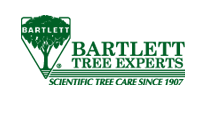Wood Acres arborists are experts in the proper pruning of young trees. Experienced pruning is essential in developing a tree with a strong structure and desirable form. Trees that receive the appropriate pruning measures while they are young will require little corrective pruning when they mature.
Pruning of newly planted trees should be limited to corrective pruning. Remove torn or broken branches, and save other pruning measures for the second or third year.
The belief that trees should be pruned when planted to compensate for root loss is misguided. Trees need their leaves and shoot tips to provide food and the substances that stimulate new root production. Unpruned trees establish faster with a stronger root system than trees pruned at the time of planting.
The reason that you may want a trained arborist to manage your new tree's pruning is because each cut has the potential to change the growth of the tree.
Proper technique is essential. Poor pruning with the wrong tool can cause damage that lasts for the life of the tree.
Trees do not heal the way people do. When a tree is wounded, it must grow over and compartmentalize the wound. As a result, the wound is contained within the tree forever.
Small cuts do less damage to the tree than large cuts. For that reason, proper pruning (training) of young trees is critical. Waiting to prune a tree until it is mature can create the need for large cuts that the tree cannot easily close.
Wood Acres will prune your young trees to establish a strong trunk with sturdy, well-spaced branches. The strength of the branch structure depends on the relative sizes of the branches, the branch angles, and the spacing of the limbs. Naturally, those factors vary with the growth habit of the tree. Pin oaks and sweetgums, for example, have a conical shape with a central leader. Elms and live oaks are often wide spreading without a central leader. Other trees, such as lindens and Bradford pears, are densely branched. Good pruning techniques remove structurally weak branches while maintaining the natural form of the tree.
For most young trees, Wood Acres Tree Specialists maintains a single dominant leader growing upward for good trunk development. Sometimes a tree will develop double leaders known as co-dominant stems. Co-dominant stems can lead to structural weaknesses, so we remove one of the stems while the tree is young.
The lateral branches growing on the sides contribute to the development of a sturdy well-tapered trunk. It is important to leave some of these lateral branches in place, even though they may be pruned out later. These branches, known as temporary branches, also help protect the trunk from sun and mechanical injury. Temporary branches should be kept short enough not to be an obstruction or compete with selected permanent branches.
Nursery trees often have low branches that may make the tree appear well-proportioned when young, but low branches are seldom appropriate for large-growing trees in an urban environment. How a young tree is trained depends on its primary function in the landscape. For example, street trees must be pruned so that they allow at least 16 feet of clearance for traffic. Most landscape trees require only about 8 feet of clearance.
The height of the lowest permanent branch is determined by the tree’s intended function and location in the landscape. Trees that are used to screen an unsightly view or provide a wind break may be allowed to branch low to the ground. Most large-growing trees in the landscape must eventually be pruned to allow head clearance.
The spacing of branches, both vertically and radically, in the tree is very important. Branches selected as permanent scaffold branches must be well spaced along the trunk. Maintain radial balance with branches growing outward in each direction.
The proper vertical spacing of permanent branches is equal to 3 percent of the tree’s eventual height. Thus, a tree that will be 50 feet tall should have permanent scaffold branches spaced about 18 inches apart along the trunk. Avoid allowing two scaffold branches to arise one above the other on the same side of the tree.
Some trees have a tendency to develop branches with narrow angles of attachment and tight crotches. As the tree grows, bark can become enclosed deep within the crotch between the branch and the trunk. Such growth is called included bark. Included bark weakens the attachment of the branch to the trunk and can lead to branch failure when the tree matures. Wood Acres prunes branches with weak attachments while they are young.
The leaves of each branch must manufacture enough food to keep that branch alive and growing so Wood Acres is careful not to overthin.We are careful to maintain at least half the foliage on branches arising in the lower two-thirds of the tree.










